#Eliot Feld
Explore tagged Tumblr posts
Text
youtube
haven't posted this in awhile but here it is again
#great band#unbelievable song#honestly one of the most beautiful songs I've ever heard#goosebumps the first time I heard it years ago#goosebumps now#thanks Eliot Feld I guess haha
0 notes
Text

Day 25 of my 31 days of horror.
Factoid: directed by Eliot Feld.
0 notes
Text
United Nation Security Council Resolutions, Eliot Feld Choreography, Google, More: Thursday ResearchBuzz, May 30, 2024
NEW RESOURCES Center for Data Innovation: Analyzing UN Security Council Resolutions. “A group of researchers from Germany, Italy, and the United Kingdom have created a dataset called “corpus of resolutions” that contains all resolutions, drafts, and meeting records of the United Nations (UN) Security Council, an international body that aims to ensure global peace and security.” Broadway World:…
View On WordPress
0 notes
Text
West Side Story (Jerome Robbins, Robert Wise, 1961)
Cast: Natalie Wood, Richard Beymer, Russ Tamblyn, Rita Moreno, George Chakiris, Simon Oakland, Ned Glass, William Bramley, Tucker Smith, Tony Mordente, David Winters, Eliot Feld, Bret Michaels. Screenplay: Ernest Lehman, based on a play by Arthur Laurents and Jerome Robbins and a play by William Shakespeare. Cinematography: Daniel L. Fapp. Production design: Boris Leven. Film editing: Thomas Stanford. Music: Leonard Bernstein; song lyrics by Stephen Sondheim.




WEST SIDE STORY, directed by Robert Wise and Jerome Robbins, celebrated its New York premiere on October 18, 1961.
#West Side Story#Robert Wise#Jerome Robbins#Natalie Wood#Richard Beymer#Russ Tamblyn#Rita Moreno#George Chakiris
68 notes
·
View notes
Text
This is a Baby John appreciation post.
Both 1961 Baby John and 2021 Baby John. I just really like Baby John.
#i'm sure Baby John from the stage version is great too but i haven't seen it#baby john#west side story#west side story 1961#west side story 2021#west side story remake#wss#eliot feld#patrick higgins#jets#the jets#appreciation post#movie#film#musical
107 notes
·
View notes
Text

My original boys! I love them so 🥲
#the jets west side story#russ tamblyn#tucker smith#tommy abbott#eliot feld#david winters#scooter teague#tony mordente#harvey evans#bert michaels#david bean#robert banas#west side story#west side story 1961
26 notes
·
View notes
Photo

Eliot Feld performing in “Tzaddik,” photo Gjon Mili.
“Tzaddik” is a work of modern ballet by Jewish-American choreographer Eliot Feld. Feld, who made an enormous number of ballets for his own companies, ABT, the Joffrey Ballet, NYCB, the Juilliard School, and others, made two minor works that dealt explicitly with Jewish themes, both in 1974: “Sephardic Song” and “Tzaddik.”
Feld frequently incorporated folk elements from various traditions into his choreography: “Feld uses popular or folk dance motifs in his choreography the way Copland has used to folk tunes in his scores - not just as a springboard and reference point, but as accent and seasoning for his own dance language” (Kriegsman 1978, see Further Reading). However, Jewish folk dance appeared in only these two short works.
Set to a score by Jewish-American composer Aaron Copland, “Tzaddik” is performed in front of a set incorporating Hebrew text by Boris Aronson, himself a leading Jewish-American scenic designer who worked alongside his wife Lisa Jalowetz on Broadway (including for Fiddler on the Roof) and in the Yiddish theater world, and also designed the sets for Baryshnikov’s Nutcracker.
“Tzaddik,” though plotless, is explicitly about (Ashkenazi-Hasidic) Jewish rituals and religious practice. Dedicated to Feld’s grandmother, it draws upon Hasidic aesthetics and movement and centers on the eponymous tzaddik, or holy scholar at the center of a Hasidic community. The tzaddik dances to teach his two disciples, who echo his movements. Feld himself apparently danced the leading role, which required “intensity” and “romantic gusto” (Barnes 1974, NYT).
The Eliot Feld Video Archive preserves some footage of “Tzaddik” filmed in 1975, which may be viewed in person at the New York Public Library for the Performing Arts, Dorothy and Lewis B. Cullman Center.
Further reading: Feld Video Archive, the Eliot Feld Ballet’s current iteration, American Jewish Biographies entry from 1982, 1974 NYT review, another, much longer 1974 NYT review. 1978 Washington Post review. (Please note that the reviews contain racism and antisemitism of the microaggression variety.)
3 notes
·
View notes
Text










West Side Story (1961)
365 Movie Challenge
82/365
#365 movie challenge#365 film challenge#west side story#robert wise#jerome robbins#natalie wood#richard beymer#rita moreno#russ tamblyn#george chakiris#tucker smith#tony mordente#eliot feld#david winters#film#movie#drama#romantic#romance#musical#tragedy#crime
37 notes
·
View notes
Text
West Side Story (1961) Review
West Side Story (1961) Review
In the Upper West Side of New York City in the 1950s two teenage gangs struggle to gain control, The Jets and the Sharks going up against each other and when Maria and Tony from the opposite sides fall in love it would led to some very tragic circumstances. ⭐️⭐️⭐️⭐️ Continue reading

View On WordPress
#1961#Anthony Teague#Arthur Laurents#BBC#BBC iPlayer#Bert Michaels#Best Picture#Best Picture Project#Best Picture Winner#Crime#David Bean#David Winters#Drama#Eliot Feld#Ernest Lehman#George Chakiris#Gina Trikonis#Gus Triknois#Harvey Evans#Jay Norman#Jerome Robbins#Jose De Vega#Musical#Natalie Wood#Ned Glass#Review#Richard Beymer#Rita Moreno#Robert Banas#Robert Wise
0 notes
Text

elizabeth lee photographed in eliot feld’s the consort by martha swope
19 notes
·
View notes
Text
February 28, 2021: West Side Story (Part 2)
Got my popcorn. Sweet, sweet popcorn.

Can I just say how much I genuinely miss movie theatre popcorn? And I don’t mean Orville Reddenbacher, or Pop Times, I mean real movie theater popcorn. One day soon...ONE DAY SOON...anyway, this movie is absolutely awesome, and I’m excites for Part 2, so let’s get into it. Part 1 is right here!
Recap (2/2)
We go to Maria and her friends Anita, Consuela, Rosalia, and Fransisca (Yvonne Wilder, Suzie Kaye, and Joanne Miya) at their seamstress jobs, as an entranced Maria begins to prepare herself for something that she won’t divulge. When her friends ask why she’s so happy, she responds with what else: a classic song (”I Feel Pretty”)!

After said classic song, Anita reveals that there’s a brawl that night, and notes that they fight to “get rid of their feelings” That sounds like toxic masculinity, but I’m no expert. Anyway, Maria tries to get Anita to leave before Tony shows up. Then Tony shows up. Whoops. Well, Anita’s in on it now, and she promises Maria to keep their love affair secret.
Now that Maria knows about the duel, she asks Tony to stop the fight, as any fight between their two factions isn’t good for them. He agrees, and the two spend time together playing pretend with manakins representing their families, and their perceptions of the couple. It’s extremely cute, and it ends in a play wedding, culminating in another duet ("One Hand, One Heart”).

Again, it’s very sweet. But there’s no time for that! The Jets are gonna have their day tonight! And the Sharks also have a surprise in store. The two gangs prepare for their fight, each plotting something dirty, just in case. Anita prepares for Bernardo to come home and engage in a night of passion. Meanwhile, Tony and Maria each sing for the end of the fight, and their future together. And, of course, Schrank and Krupke are trolling for any fights between the gangs. All of this is, of course, in an ensemble song for the entire cast (”Tonight Quintet”)
youtube
Time for a fight. And if you know the original play...this won’t end well. This will end VERY badly indeed. If we’re following the play, there’s at least one death coming, and maybe two, depending on how we do it. But let’s find out, as the two gangs face off underneath the highway.
Bernardo represents the Sharks, while Ice (Tucker Smith) represents the Jets. But Tony attempts to interfere and make peace with Bernardo and the Sharks. Tony refuses to fight the group, and once the fight escalates, Riff steps in and hits Bernardo. Looks like Tybalt and Mercutio are finally going to battle. And that’s when they draw their swords.

Tony screams for the fight to stop, to no avail. And at a certain point, of course, the fight turns against Riff...and Bernardo kills him. And that’s when an enraged Tony retaliates and kills Nardo in turn. Two deaths. And the sirens wail in the disance as the gangs escape, leaving the bodies of the two leaders behind, alongside a beaten Tony, who realizes now what he’s done. Damn.

On the rooftop, Maria waits for Tony to return, blissfully unaware of what’s just happened to her brother. However, Chino arrives and tells her what’s happened. She immediately asks what happened to Tony, and he angrily tells her that he killed Bernardo, and runs off. She doesn’t believe him, but it’s confirmed when Tony himself shows up and explains. She’s initially enraged, but understands that it wasn’t all Tony’s fault. They realize that the world around them won’t allow their union, but they don’t care, and express their love once again through song (”Somewhere”).
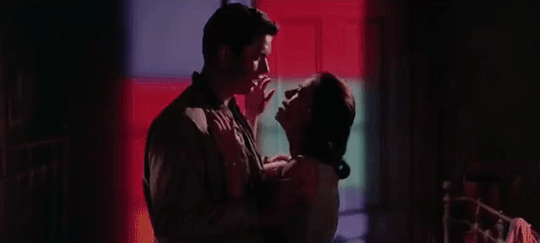
Yeah, fuck Luhrmann’s version of this story, this is clearly far superior. I mean that. But Schrank and Krupke don’t think so as they continue to roam the streets, looking for the gangs. The Jets are staying out of sight, and two of them, A-Rab and Baby John (David Winters and Eliot Feld) share their feelings, with Baby John being absolutely terrified, having seen Riff and Bernardo’s faces as they died.
The fact of the matter is, nobody was supposed to die, which should’ve been a sign for them to stop the fighting. Unfortunately, Action (Tony Mordente) aren’t satisfied with that, wants to get revenge on the Jets. This riles up the Jets, except for Baby John, who doesn’t want to keep doing this. However, as they start arguing and raging, they’re cooled down by Ice, who tells them all to...stay cool (”Cool”).
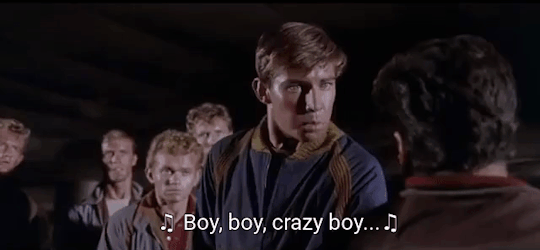
Looks like Ice is the new leader of the Jets, and the gang plays it cool as they exit towards the street. However, that’s when Anybodys (Susan Oakes), a Jets wannabe, shows up with news that Chino’s searching around the city looking for Tony...with a gun in hand. The hunt is one for Chino, as he’s hunting for Tony. And escalation continues.
But not in Maria’s room, as the two have slept together. However, Anita shows up, grieving the loss of Bernardo. She comes to speak with Maria, but catches Tony running away from the apartment. Given the fact that Tony is Bernardo’s killer, she’s not happy about this. However, of course, Anita doesn’t understand the entire situation, and her pain is clouding her emotion. Maria counters her with a song of her own, detailing her love for Tony (”A Boy Like That/I Have a Love”). This wins a tearful Anita over.

Anita warns Maria about Chino, and as Maria heads to warn Tony in turn, who should show up but asshole Schrank! He’s there to ask Maria a few questions, and acts like a proper dick about it. Because he won’t let her go, Maria asks Anita to go warn Tony at Doc’s drugstore for her. Anita agrees, and leaves. Schrank asks who the boy was that danced with her at the dance hall, as the act upset Bernardo. She lies and says it was a boy named Jose.
At Doc’s, the Jets are protecting Tony, who’s hiding in the cellar under Doc’s protection, waiting for Maria. However, Doc isn’t there, and when Anita shows up with the message...it’s bad. They don’t let her through, even though she’s there trying to help. And their antagonism of her escalates to the point that...well, if Doc hadn’t shown up, it would’ve been very back. Fuck Action, by the way, and the rest of the Jets are pretty shitty people as well.
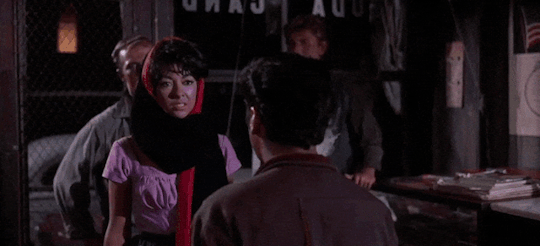
But Doc does show up, and helps a traumatized Anita up. Rightfully angry, she tells them that she wouldn’t help any of them if they were lying in the street, bleeding. Vicious words, but her emotion is palpable, give what just happened. But she goes a bit too far when she lies and tells them that Chino killed Maria in rage, before leaving in tears.
Doc chides them bitterly, and kicks the Jets out permanently, once and for all. Good. Fuck those guys, I don’t care how awesome they can dance. I mostly don’t care. He goes to the basement to see Tony, who’s excitedly raving about his future with Maria. Doc slaps him out of it, and tells Tony what Anita said. Fuck. Well, to be fair, this was never going to end well. It is a tragedy, after all.
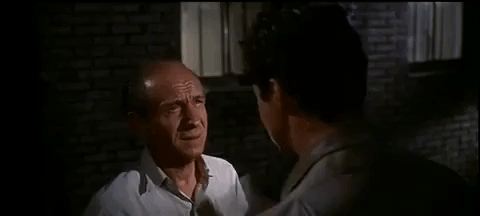
And as the story goes, Romeo believes that Juliet is dead, so he goes out to look for Chino, wanting to go with her. He calls out for him all around, but ends up finding Maria instead. And they happily reunite...for 10 seconds.

And this is all somehow worse than any other Romeo-death I’ve ever seen. It’s hard. And it’s terrible. And Tony dies in Juliet’s arms. And this is genuinely the most emotional I’ve ever been for any version of this story. Goddamn. GODDAMN.
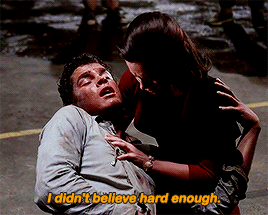
Both gangs arrive and watch on, and once Tony dies, they start going for each other once again, until Maria cries out to them all. She makes Chino give her the gun, and quickly holds it on him and ALL of them. And she gives...a terribly poignant speech. And Juliet lives...but her love dies.
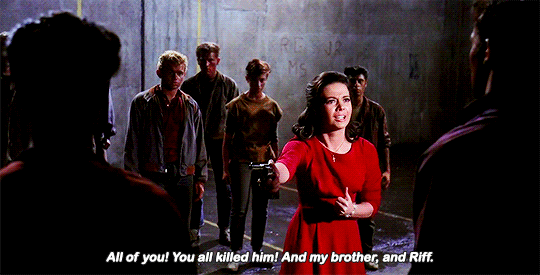
Schrank arrives, and even he bows to Maria’s love. everybody gives into it, me included. And Action, as much on a little monster that he is, is the first to step forward. He, Ice, and A-Rab step forward to pick up Tony’s body, and as they’re about to drop it, Indo and Pepe (Gus Trikonis and Jay Norman), two of the Sharks, also step in to help. And the Jets let them. One by one, the Jets and Sharks leave, and Maria eventually goes as well.

And...that’s it. That’s...West Side Story. And right now, I really want to give this movie 100%. I mean it. But I’ll think on it first. Understand, however: I’m pretty sure that this is my favorite movie of the month. See you in the Review.
#west side story#robert wise#jerome robbins#william shakespeare#romeo and juliet#natalie wood#richard beymer#rita moreno#george chakiris#russ tamblyn#romance february#user365#365 movie challenge#365 movies 365 days#365 Days 365 Movies#365 movies a year#my gifs#mygifs#tuserjulian
5 notes
·
View notes
Text
youtube
thank you to where I work, and Eliot Feld for putting dance to this band's music so I could learn who and what this band is all about
0 notes
Text
The Nutcracker: A NY-Born American Institution

Above: Tanaquil Le Clerq leading the Waltz of the Flowers in Act II. She was the original Dew Drop.
The Nutcracker is so much a part of Christmas that it’s easy to assume that it’s always been this way. In fact, Nutcracker as a holiday treat dates back only to 1954, and the New York City Ballet.
It was not the first American Nutcracker. William Christensen’s production for the San Francisco Ballet, staged ten years earlier, has that distinction. But that production didn’t lead to a thousand copycat productions of one sort or another, likely because the United States had few ballet companies in those days and, of course, it wasn’t in New York. The suite of music, drawn mostly from the second act of the ballet, was well known, but its context was not.
In the early 1950s, NYCB was still a very young company (it had been founded in 1948) and its home was the New York City Center, a city-owned theater (it moved in 1965 to the Philip Johnson-designed New York State Theater in Lincoln Center). The work of George Balanchine, founding choreographer and ballet master in chief of NYCB, was cutting-edged and appealed mostly to the culturati. Morton Baum, president of the City Center, was always after the company to stage ballets that would draw crowds. Balanchine had already mounted his own versions of Firebird and the second act of Swan Lake, but Baum thought they needed an evening-long production.
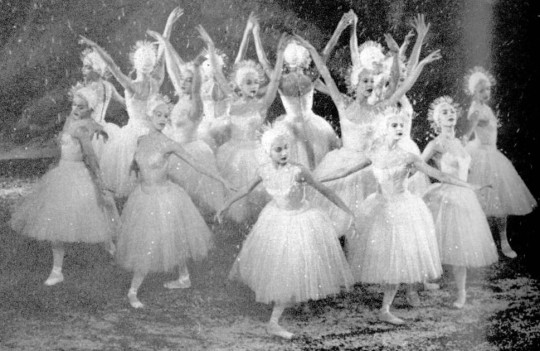
Above: The Snowflake Waltz at the end of Act I. Photo of 1954 original production.
Balanchine thought of The Nutcracker, a ballet in which he, first as a student and then as a dancer in the Imperial Ballet in St. Petersburg, had danced several roles, including the Nutcracker Prince and Candy Cane (Trepak or Russian Dance). With NYCB, he occasionally appeared as Herr Drosselmeyer, the mysterious man who gives Clara the nutcracker doll. He choreographed it all except for the battle between the Nutcracker and the Mouse King, which was done by Jerome Robbins, the Candy Cane divertissement, which is the original Alexander Shiryaev choreography from the ballet’s premiere in 1892, and the prince’s mime speech in the second act, which also came from the original production.
It was by far NYCB’s most ambitious production to date. In addition to a large cast of company members, there were two alternating casts of 39 children from the NYCB-affiliated School of American Ballet (they now number 64), a Christmas tree that grew to gigantic proportions, and a blizzard—in addition to mountains of costumes and several sets. The costume for Mother Ginger alone is now 9 feet wide and weighs 85 pounds.
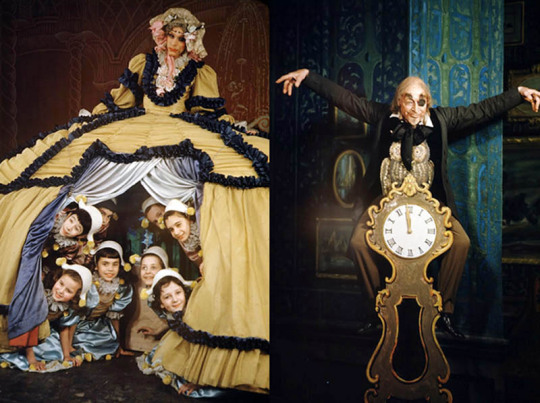
Above left: Edward Bigelow as Mother Ginger. Right: Michael Arshansky as Drosselmeyer. Photos of original production.
Balanchine’s production is one “by, for, and about” children. It makes no attempt to darken the ballet’s story by suggesting that Drosselmeyer has wicked designs on Clara, as some modern productions have done.
It opened on February 2, 1954. Baum wanted the company to perform in December, when theater attendance was light, so they put it on again later in the year and were rewarded by sold-out houses and a demand for more performances. Since then, NYCB has danced it for five weeks, from Thanksgiving to New Year’s, 8 or 9 performances a week, with double casts of both adults and children and numerous opportunities for soloists and apprentices.
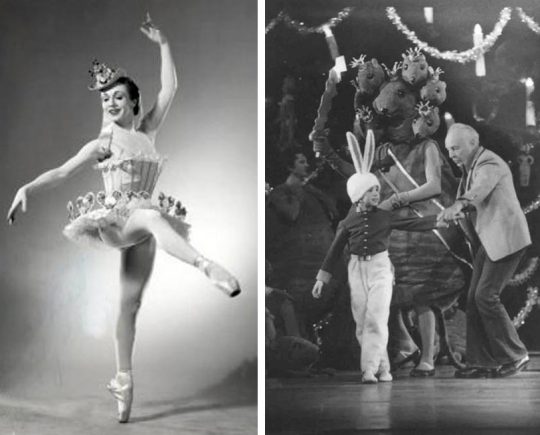
Above left: Janet Reed as lead Marzipan Shepherdess. Right: Balanchine rehearsing a child dancer playing the Bunny and an adult dancer playing the Mouse King.
It quickly became a financial bedrock for the company, as it has for ballet companies all over the country, both professional and amateur, who were quick to adopt it as a holiday treat. In New York state alone, one list has 32 productions in addition to NYCB’s.In some cases it accounts for fully half of a company’s revenue over the season. Many companies, including Miami City Ballet, Pacific Northwest Ballet, Oregon Ballet Theater, and the Pennsylvania Ballet, dance Balanchine’s version. Others, some too small or insufficiently high-powered, dance alternate versions with the number of adult soloists reduced. Many import stars from NYCB and American Ballet Theater to dance Sugar Plum and her cavalier.
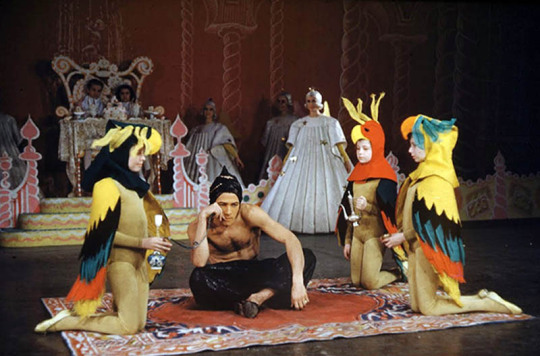
Above: Francisco Moncion, the original Coffee (Arabian Dance). This divertissement is now danced by a woman.
Over the years, many of the ballet’s child performers have gone onto professional careers. At NYCB, Zina Bethune and Bonnie Bedelia, both former Claras, became well-known actresses; Eliot Feld (Nutcracker Prince) turned into a noted choreographer; Peter Boal (also Nutcracker Prince) became director of the Pacific Northwest Ballet in Seattle; and at least 4 former Claras grew up to join the company. Two of them, Judith Fugate and Jennie Somogyi, eventually became principal dancers and danced the role of Sugar Plum Fairy.
NYCB has recorded the complete ballet twice, once in 1993 with Darci Kistler, Damian Woetzel, and Kyra Nichols, and again in 2011, with Megan Fairchild, Joaquin de Luz, and Ashley Bouder. Both recordings are available on disc.
Links What NYCB principal Abi Stafford learned dancing 48 Nutcrackers How Balanchine’s version compares to that of a company performing a version based on the Russian original NYCB’s first black Clara (now called Marie after the Russian original) My First Nutcracker: Eight NYCB dancers recall their first experience with Nutcracker Balanchine’s Christmas miracle. Includes comments from NYCB dancers Behind the scenes at NYCB’s Nutcracker (photo album) Nutcracker Nation, a book about how the ballet became an American institution
167 notes
·
View notes
Text
6/10/18 O&A NYC WHAT'S HAPPENING THIS WEEK: JUNE 10- 17, 2018
6/10/18 O&A NYC WHAT’S HAPPENING THIS WEEK: JUNE 10- 17, 2018
New York City in late spring, and the city is in full bloom. We have got art blossoming in Uptown and Midtown, dance swirls around Lincoln Center and Chelsea, female jewels thieves stealing the movie box office and Denzel on Broadway. Here are a few of the many events happening in the city that never sleeps guaranteed to keep you Out and About.
Bendix Harms, SANKT RUFUS, at the Anton Kern…
View On WordPress
#A Movement for Five#Aloha Nights#Alvin Ailey American Dance Theater#Amateur Night: Show Off#American Ballet Theatre#Anton Kern Gallery#Apple Pie#Ballet Tech Kids Dance#Bendix Harms#Camille Brown#Christopher Huggins#Dave Douglas Quintet#David Salle: Paintings 1985-1995#Dawn Marie Bazemore#Denzel Washington#Eliot Feld#Eugene O’Neill#Firelei Báez: Joy Out of Fire#Flash: Photographs by Harold Edgerton#Folded Prism#Georgia O’Keeffe: Visions of Hawai‘i#Incredibles 2#It’s The Effort That Counts#Jazz At Lincoln Center#Joe Lovano#John Levis#Joyce Theater#Legendary Apollo Theater#Listening Party: The Hampton Legacy#Liza Jessie Peterson
0 notes
Note
Can we talk about the q961 west side story the dance at the gym why did riff get mad at baby john? He was just having fun
Baby John is always such an innocent little muffin, but especially in the 1961 movie!
I don’t think Riff was mad at him. I think he was hitting him more to say, “Read the room, Baby John!” All the other couples in the gym were basically grinding on each other at that point, and then here comes Baby John and Minnie, dancing like the sweet babies they are.
Riff was kind of acting like a big brother there, in the “Don’t embarrass us” sense 😂
#riff west side story#baby john west side story#west side story#west side story 1961#russ tamblyn#eliot feld
14 notes
·
View notes
Photo

View of dancer and choreographer Eliot Feld during a rehearsal with his company, Feld Ballet, August 1970. (Photo by Jack Mitchell)
Eliot Feld (1942- ) is a notable Jewish-American choreographer who has made a truly impressive 149 ballets and founded the prestigious ballet academy/academic public school Ballet Tech in NYC.
Born to a middle-class Jewish family in Brooklyn, Feld studied at the School of American Ballet and the High School of Performing Arts in NYC. His early career in ballet was spent as a dancer, where he danced small roles with NYCB, on Broadway (including in Fiddler on the Roof), and in Donald McKaye and Pearl Lang’s companies. He also danced with ABT, which is where, in 1967, he debuted as a choreographer at age 25 with At Midnight.
At Midnight was an enormous success, and ABT and other companies commissioned several more well-regarded works. In 1969, he left ABT to found his first company of his own, the American Company Ballet, which lasted only two years before foundering. Afterwards, he returned to dance and choreography at the Joffrey and other companies. In 1974, however, he founded the Eliot Feld Ballet, which saw a great deal more success. It was named company in residence at the Newman Theater, part of the New York Shakespeare Festival, and danced mainly Feld’s own works. The Eliot Feld Ballet transitioned to a school and foundation known as Ballet Tech in 1978, and continues in this form today. Ballet Tech runs the tuition-free New York City Public School for Dance, as well as other programs for young dancers. Feld served as its artistic director until June 2021.
The Ballet Tech foundation has a large physical impact on American ballet as well. Through the foundation, Feld and Cora Cahan renovated the well-known Joyce Theater for use by small- and medium-sized dance companies; today, the Joyce is a vital part of the NYC dance ecosystem. Moreover, Feld collaborated with ABT and Alvin Ailey to rescue 890 Broadway from commercial development and turn the space into the Lawrence A. Wien Center for Dance and Theatre. The Wien Center now houses ABT, Ballet Tech, and a number of other, smaller dance companies.
Feld’s choreography, which is held in the repertories of Ballet Tech, American Ballet Theatre, The Joffrey Ballet, The National Ballet of Canada, New York City Ballet, Pacific Northwest Ballet, and The Royal Swedish Ballet, among others, is a blend of ballet and contemporary dance, almost always abstract and plotless. Feld frequently set dance to American composers working contemporaneously. Feld was also known for incorporating folk dances from various ethnic traditions into his work. Two of these works, “Sephardic Song” and “Tzaddik,” both from 1974, explicitly deal with Jewish themes.
Further reading: About Ballet Tech, Feld Video Archive, the Eliot Feld Ballet’s current iteration, American Jewish Biographies entry from 1982, NYT review for “At Midnight,” NYT feature on Ballet Tech, Feld announces his retirement in 2021
#Eliot Feld#ballet#Eliot Feld Ballet#Ballet Tech#american ballet theatre#choreographer#founder#american#informational
2 notes
·
View notes